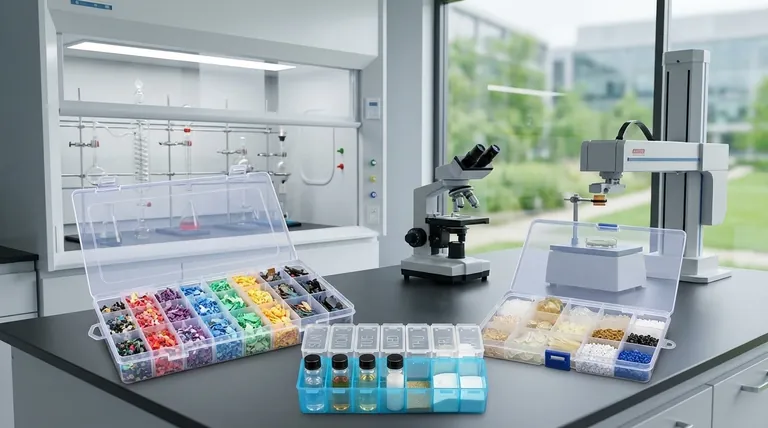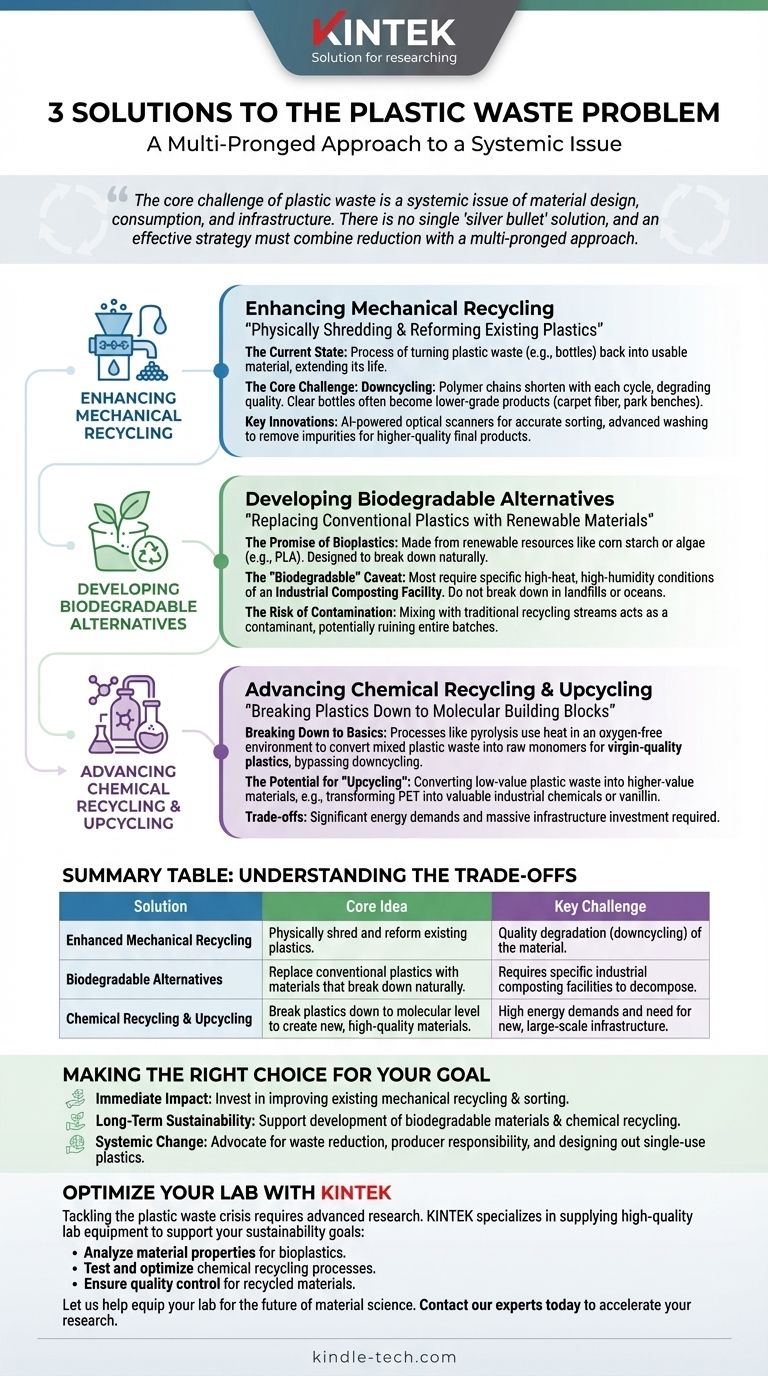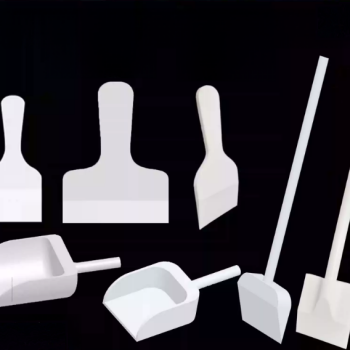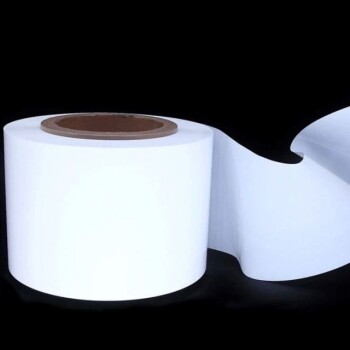Die drei Hauptlösungen für das Plastikmüllproblem sind die Verbesserung des traditionellen mechanischen Recyclings, die Entwicklung und Skalierung biologisch abbaubarer Alternativen und die Weiterentwicklung neuer Formen des chemischen Recyclings und Upcyclings. Jeder Ansatz zielt auf eine andere Phase des Lebenszyklus von Kunststoff ab, von der Verbesserung der Handhabung des bestehenden Abfalls bis zur grundlegenden Änderung der verwendeten Materialien.
Die Kernherausforderung bei Plastikmüll betrifft nicht nur die Entsorgung; es ist ein systemisches Problem des Materialdesigns, des Konsums und der Infrastruktur. Es gibt keine einzelne „Wunderlösung“, und eine wirksame Strategie muss die Reduzierung unseres Gesamtverbrauchs mit einem vielschichtigen Ansatz zur Bewältigung des unvermeidbaren Abfalls kombinieren.

Lösung 1: Verbesserung des mechanischen Recyclings
Das mechanische Recycling ist die etablierteste Methode zur Verarbeitung von Plastikmüll. Dabei wird Kunststoff physisch geschreddert, gewaschen, geschmolzen und zu neuen Pellets für die Herstellung umgeformt.
Der aktuelle Stand des mechanischen Recyclings
Dies ist der Prozess, mit dem die meisten Menschen vertraut sind – das Einwerfen einer Plastikflasche in die Recyclingtonne. Das Ziel ist es, diese Flasche wieder in ein verwendbares Material zu verwandeln, ihre Lebensdauer zu verlängern und den Bedarf an neuem Kunststoff zu reduzieren.
Die Kernherausforderung: Downcycling
Die Haupteinschränkung des mechanischen Recyclings ist das Downcycling. Jedes Mal, wenn Kunststoff geschmolzen und wiederaufbereitet wird, verkürzen sich seine Polymerketten, was seine Qualität und Festigkeit beeinträchtigt. Das bedeutet, dass aus einer klaren Wasserflasche selten wieder eine klare Wasserflasche wird; wahrscheinlicher wird sie zu einem minderwertigeren Produkt wie Teppichfaser oder einer Parkbank.
Wichtige Innovationen zur Verbesserung
Um dem Downcycling entgegenzuwirken, konzentrieren sich die Bemühungen auf eine bessere Sortierung und Reinigung. KI-gestützte optische Scanner können verschiedene Kunststoffarten mit weitaus größerer Genauigkeit als menschliche Sortierer identifizieren und trennen, wodurch Verunreinigungen reduziert werden. Fortschrittliche Waschverfahren können ebenfalls mehr Verunreinigungen entfernen, was zu einem qualitativ hochwertigeren Endprodukt führt.
Lösung 2: Entwicklung biologisch abbaubarer Alternativen
Dieser Ansatz konzentriert sich auf den Ersatz herkömmlicher, erdölbasierter Kunststoffe durch Materialien, die so konzipiert sind, dass sie sich in der Umwelt auf natürliche Weise zersetzen.
Das Versprechen von Biokunststoffen
Biokunststoffe werden aus nachwachsenden Rohstoffen wie Maisstärke, Zuckerrohr oder Algen hergestellt. Das bekannteste Beispiel ist die Polymilchsäure (PLA), die häufig in Einwegbechern und Lebensmittelbehältern verwendet wird. Das Ziel ist die Schaffung von Materialien, die nicht jahrhundertelang in der Umwelt verbleiben.
Der Vorbehalt bei „biologisch abbaubar“
Ein kritischer Unterschied besteht darin, dass die meisten „biologisch abbaubaren“ oder „kompostierbaren“ Kunststoffe weder auf einer Mülldeponie noch im Ozean abgebaut werden. Sie benötigen die spezifischen Bedingungen einer industriellen Kompostieranlage mit hoher Hitze und hoher Luftfeuchtigkeit, die noch nicht allgemein verfügbar sind.
Das Risiko der Kontamination
Wenn Biokunststoffe wie PLA versehentlich in den traditionellen Kunststoffrecyclingstrom gelangen, wirken sie als Verunreinigung. Da sie eine andere chemische Zusammensetzung und einen anderen Schmelzpunkt haben, können sie eine ganze Charge recycelten erdölbasierten Kunststoffs unbrauchbar machen, was die Notwendigkeit klarer Kennzeichnung und Verbraucheraufklärung unterstreicht.
Lösung 3: Weiterentwicklung von chemischem Recycling und Upcycling
Chemisches Recycling ist eine aufkommende Reihe von Technologien, die chemische Prozesse, Hitze oder Katalysatoren nutzen, um Kunststoffe in ihre ursprünglichen molekularen Bausteine zu zerlegen.
Kunststoff auf die Grundlagen reduzieren
Verfahren wie die Pyrolyse nutzen hohe Hitze in einer sauerstofffreien Umgebung, um gemischte Kunststoffabfälle wieder in ein flüssiges Öl oder Rohmonomere umzuwandeln. Diese Rohstoffe können dann zur Herstellung neuer Kunststoffe in Neuware-Qualität verwendet werden, wodurch das Problem des Downcyclings vollständig umgangen wird.
Das Potenzial für „Upcycling“
Ein fortschrittlicheres Konzept ist das Upcycling, das darauf abzielt, minderwertige Kunststoffabfälle in höherwertige Materialien umzuwandeln. Forscher nutzen beispielsweise gentechnisch veränderte Enzyme und chemische Prozesse, um PET (den Kunststoff in Wasserflaschen) in wertvolle Industriechemikalien oder sogar Vanillin, die Hauptkomponente des Vanillegeschmacks, umzuwandeln.
Die Abwägungen verstehen
Keine einzelne Lösung ist perfekt, und jede birgt erhebliche Herausforderungen, die angegangen werden müssen, damit sie global wirksam ist.
Die Lücke bei Energie und Infrastruktur
Sowohl die fortschrittliche mechanische Sortierung als auch das chemische Recycling erfordern erhebliche Energiemengen und massive Investitionen in neue Infrastrukturen. Darüber hinaus erfordert die Skalierung biologisch abbaubarer Alternativen den Aufbau eines parallelen Systems von industriellen Kompostieranlagen, um sie ordnungsgemäß zu verarbeiten.
Die Wurzel des Problems: Übermäßiger Verbrauch
Letztendlich befassen Recycling und Materialinnovationen nur den „End-of-Life“-Teil des Problems. Ohne eine gleichzeitige und entschlossene Anstrengung zur Reduzierung der Produktion und des Verbrauchs von Einwegkunststoffen werden diese Lösungen Schwierigkeiten haben, mit dem schieren Volumen des anfallenden Abfalls Schritt zu halten.
Die richtige Wahl für Ihr Ziel treffen
Der optimale Weg nach vorn hängt davon ab, diese Strategien zu kombinieren, um verschiedene Aspekte der Plastikmüllkrise anzugehen.
- Wenn Ihr Hauptaugenmerk auf der unmittelbaren Wirkung liegt: Investieren Sie in die Verbesserung der bestehenden Infrastruktur für mechanisches Recycling und fördern Sie bessere öffentliche Sortierpraktiken, um den Wert der bereits im Umlauf befindlichen Materialien zu maximieren.
- Wenn Ihr Hauptaugenmerk auf langfristiger Nachhaltigkeit liegt: Unterstützen Sie die Entwicklung und Skalierung wirklich biologisch abbaubarer Materialien und der chemischen Recyclingtechnologien, die für die Schaffung einer vollständig kreislauforientierten Kunststoffwirtschaft erforderlich sind.
- Wenn Ihr Hauptaugenmerk auf systemischem Wandel liegt: Setzen Sie sich für politische Maßnahmen ein, die die Abfallreduzierung priorisieren, die Hersteller für den gesamten Lebenszyklus ihrer Produkte verantwortlich machen und Einwegkunststoffe von vornherein eliminieren.
Eine erfolgreiche Zukunft hängt von einer vielschichtigen Strategie ab, die unsere Abhängigkeit von Kunststoff reduziert, die Art und Weise, wie wir ihn handhaben, verbessert und die Natur unserer Materialien selbst innoviert.
Zusammenfassungstabelle:
| Lösung | Kernidee | Herausforderung |
|---|---|---|
| Verbessertes mechanisches Recycling | Physisches Zerkleinern und Umformen bestehender Kunststoffe. | Qualitätsverschlechterung (Downcycling) des Materials. |
| Biologisch abbaubare Alternativen | Ersatz herkömmlicher Kunststoffe durch Materialien, die sich auf natürliche Weise zersetzen. | Erfordert spezifische industrielle Kompostieranlagen zur korrekten Zersetzung. |
| Chemisches Recycling & Upcycling | Zerlegung von Kunststoffen auf molekularer Ebene zur Herstellung neuer, hochwertiger Materialien. | Hoher Energiebedarf und Notwendigkeit neuer, groß angelegter Infrastruktur. |
Optimieren Sie die Rolle Ihres Labors bei der Materialinnovation mit KINTEK
Die Bewältigung der Plastikmüllkrise erfordert fortschrittliche Forschung und präzise Materialanalyse. Unabhängig davon, ob Sie neue biologisch abbaubare Polymere entwickeln, Recyclingprozesse optimieren oder chemische Upcycling-Pfade erforschen, ist die Verfügbarkeit der richtigen Laborausrüstung entscheidend für den Erfolg.
KINTEK ist spezialisiert auf die Lieferung hochwertiger Laborgeräte und Verbrauchsmaterialien zur Unterstützung Ihrer Nachhaltigkeitsziele. Wir bieten die Werkzeuge, die Sie benötigen, um:
- Materialeigenschaften und Zersetzungsraten von Biokunststoffen zu analysieren.
- Chemische Recycling- und Pyrolyseprozesse zu testen und zu optimieren.
- Die Qualitätskontrolle für recycelte Materialien und neue Polymerformulierungen sicherzustellen.
Lassen Sie uns Ihnen helfen, Ihr Labor für die Zukunft der Materialwissenschaft auszustatten. Kontaktieren Sie noch heute unsere Experten, um zu besprechen, wie unsere Lösungen Ihre Forschung beschleunigen und zu einer Kreislaufwirtschaft beitragen können.
Visuelle Anleitung

Ähnliche Produkte
- Aufbewahrungsbox für Knopfbatterien
- Labor ITO/FTO leitfähiges Glas Reinigungsblumenkorb
- Mahlbecher aus Metalllegierung mit Kugeln
- PTFE-Reinigungsgestell
- Teflonschaufel / PTFE-Spatel
Andere fragen auch
- Wie unterscheidet sich Plastikmüll von anderen Abfallarten? Die versteckte Bedrohung durch Mikroplastik
- Was ist der Unterschied zwischen einer galvanischen Zelle und einer Elektrolysezelle? Beherrschung der elektrochemischen Prinzipien
- Welche Größen und Dicken sind für Nickelschaum verfügbar? Wählen Sie die richtigen Spezifikationen für Ihre Anwendung
- Was sind die Hauptanwendungen von Glaskohlenstoff? Nutzen Sie seine einzigartigen Eigenschaften für anspruchsvolle Anwendungen
- Was ist der Hauptunterschied zwischen einer galvanischen Zelle und einer elektrolytischen Zelle? Ein klarer Leitfaden zur Energieumwandlung






